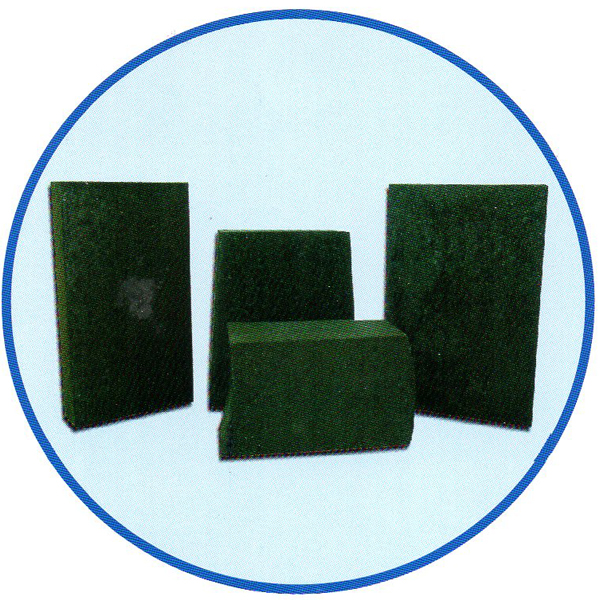The masonry rules of clay brick/high alumina brick furnace bottom are integrated and shared by refractory brick manufacturers. Light burnt powder
1. Clay brick/high alumina brick furnace bottom is generally composed of several layers of vertical brick lining, each layer can be built into a cross shape or a straight shape. The center lines of the upper and lower phases are at an angle of 30°, and the center line of the furnace bottom brick of the uppermost layer is at an angle of 30° to 60° with the center line of the tap hole.
2. There are usually two masonry methods for the cross shape of the furnace bottom center:
(1) Lay out the masonry according to the cross center line marked on the cooling stave. Place 4 guide square timbers with flat surfaces and at right angles to each other along the line. The center points are staggered to avoid seams. The center point of the upper brick center line should be staggered. The center point of the lower brick is half the brick thickness.
(2) Position the center brick according to the cross center line of the furnace bottom, and mark the surface of the center brick with the vertical line that coincides with the cross line of the furnace bottom, and then stagger the half of the thickness of the brick column, and then pull a cross line and place 4 along the line Guide square timber, and build the guide surface accordingly.

3. Note that the square timber not only serves as a support for the masonry guide surface, so its supporting surface and bottom surface need to be planed and are at right angles to each other.
4. Place the square timber along the line, use a level to check its verticality, the allowable error is within 0.1mm. When laying the bottom of each layer of bricks, accurately check whether the crosshairs are at a right angle of 90°. Check and ensure that the guiding square timber and the cross line are accurate and consistent, without deviation, so as not to affect the masonry quality.
5. The center cross line of the furnace bottom is the key to the whole floor of the furnace bottom. After putting the bottom, check the brick joints and verticality of the clay/high-alumina bricks. brick. After laying 3 to 4 rows of bricks, that is, after the masonry has a certain degree of stability, the guide square timber can be removed, and then the four corners can be simultaneously built.
6. The clay brick/high alumina brick furnace bottom should be masonry with phosphate refractory mud. The thickness of the construction expansion joints should be kept in strict accordance with the construction requirements, and the refractory mud in the brick joints must be dense and full. Add water according to the construction instructions. Strictly control the viscosity of refractory mud.
7. The concrete bricklaying process of clay bricks/high alumina bricks: firstly pre-lay the dry pendulum, check the stitching, and start the formal masonry; clean the construction surface, first spread a layer of refractory mortar, and then proceed to brushing, dipping, The action of kneading. Phosphate refractory mud flows faster. During operation, hold the lower end of the brick with one hand, and the lower part of the edge between the large surface and the side of the brick with the other hand, and quickly find the brick position after kneading it up and down 4 to 5 times.
8. The main points of operation for building clay bricks/high-alumina bricks at the bottom of the furnace are: steady sticking, low leaning, short drawing, and heavy kneading.
Stable staining: Dip all the large and small surfaces of the clay brick/high alumina brick evenly with phosphate refractory mud and take it out.
Low Reliability: When the clay bricks/high alumina bricks are dipped in grout and ready to be in place, they should be placed as low as possible. In order to prevent the refractory mud from falling out of the brick joints, which affects the density and fullness of the brick joint mud.
Short pull: The distance of the up and down pull when rubbing should be short, generally 30~40mm.
Heavy kneading: The kneading action should be heavy and tight.
After the clay brick/high-alumina brick is in place, use a wooden hammer to align it, tap it slowly, and avoid sinking and loosening of the refractory mud.
9. In the process of masonry, check and adjust the verticality of refractory bricks to ensure that the vertical error does not exceed 2mm.
10. After each row of bricks is finished, check the verticality of the brick body, the flatness of the upper surface of the refractory brick, the thickness of the reserved expansion joint and the relative elevation difference of each point of the brick lining, so as to facilitate the construction of the next row of clay bricks/high alumina bricks. build.
11. Reserve an expansion joint of 100-150mm between the furnace bottom masonry and the cooling stave or carbon block protection wall, and fill it densely with carbon ramming material. Generally, processed bricks are not used for the areas less than 1/2 brick width at the edges, and carbon ramming materials are also used for filling.
Yingkou Dingfeng Metallurgical Technology Co., Ltd.
18041722333
Contact: Mr. Zhang
Telephone: 18041722333
Mail box: 810678900@qq.com
Address: Liangjunzhai Village, Yong'an Town, Dashiqiao City, Yingkou City, Liaoning Province

QR code